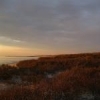-
Posts
4,222 -
Joined
-
Last visited
Content Type
Profiles
Blogs
Forums
American Weather
Media Demo
Store
Gallery
Everything posted by AvantHiatus
-
Nutty....
-
Enormous mounds of methane found under the Arctic sea: Underwater pingos may reveal 'worrying' clues about climate change http://www.dailymail.co.uk/sciencetech/article-3325230/Enormous-mounds-methane-Arctic-sea-Underwater-pingos-reveal-clues-climate-change.html
-
Not methane but this is not good. Carbon feedbacks on hyperdrive in a human hothouse.
-
Impressive considering the prevailing 500mb. How many of the 90s were in May?
-
It is our old friend, Paul Beckwith.
-

Southern MD / Lower Eastern Shore weather discussion
AvantHiatus replied to PrinceFrederickWx's topic in Mid Atlantic
Riding on the homebrew train. The recent uptick in storms forming in the sub-tropics early and late in the season is interesting and bears watching. -

Southern MD / Lower Eastern Shore weather discussion
AvantHiatus replied to PrinceFrederickWx's topic in Mid Atlantic
Looks like the Euro. -
Strong trend at Nunavut...
-
Unconfirmed Reports of Giant, 1 Kilometer, Methane Crater Found in Siberia https://robertscribbler.wordpress.com/2015/03/13/unconfirmed-reports-of-giant-600-meter-methane-crater-found-in-siberia/
-

Best Mid-Atlantic winter storm of the last 50 years
AvantHiatus replied to PrinceFrederickWx's topic in Mid Atlantic
Apologies, however if a tree falls in a forest does anyone hear it? -

Best Mid-Atlantic winter storm of the last 50 years
AvantHiatus replied to PrinceFrederickWx's topic in Mid Atlantic
Ash Wednesday Storm 1962. http://en.wikipedia.org/wiki/Ash_Wednesday_Storm_of_1962 -

Southern MD / Lower Eastern Shore weather discussion
AvantHiatus replied to PrinceFrederickWx's topic in Mid Atlantic
I'm feeling a historic sleet-storm for my backyard on south. Perhaps a thick glacier topped with 6 inches of wet snow. I also expect insane rates. -

Southern MD / Lower Eastern Shore weather discussion
AvantHiatus replied to PrinceFrederickWx's topic in Mid Atlantic
Tropical cyclone remnants on 3/14 18z GFS. March FTW http://mag.ncep.noaa.gov/data/gfs/18/gfs_namer_288_1000_500_thick.gif -

Southern MD / Lower Eastern Shore weather discussion
AvantHiatus replied to PrinceFrederickWx's topic in Mid Atlantic
Mindblown -

Southern MD / Lower Eastern Shore weather discussion
AvantHiatus replied to PrinceFrederickWx's topic in Mid Atlantic
Got GFS'd again....what is 16-20" among friends? -

Southern MD / Lower Eastern Shore weather discussion
AvantHiatus replied to PrinceFrederickWx's topic in Mid Atlantic
First fantasy tropical cyclone on the GFS in the gulf at 324. Seems early for this stuff. http://www.tropicaltidbits.com/analysis/models/gfs/2015022806/gfs_mslp_pcpn_us_47.png. -

Southern MD / Lower Eastern Shore weather discussion
AvantHiatus replied to PrinceFrederickWx's topic in Mid Atlantic
Thanks mang. I'm kind of feeling a gulf stream season and it flows well with 2014. The Atlantic has not changed much but the Pacific is where major evolution is occuring. We are still stuck with this annoying +NAO. -

Southern MD / Lower Eastern Shore weather discussion
AvantHiatus replied to PrinceFrederickWx's topic in Mid Atlantic
Semi-enthusiastic due to the ENSO. Looks like it is transitioning into central-based, also known as Modoki El Nino. This configuration includes years such as 2003 and 2005. With the 1930's pattern, we may have a strong signal shifted east instead of confined to the gulf. Given the lag between ENSO and atmospheric response, the true red meat season may not come until 2016. Something like 2014 with more landfalls is definitely possible, which would resemble a fairly active season. -
Solid proof of increased urbanization or greenhouse warming.
-
1750+ CH4 is pretty rare in the paleoclimate record. I would surmise that environmental forcings were simply "maxed" out in the 2000's. Looks like we have accelerated slightly in the last few years and especially in 2013. A more appropriate question to ask is if the recent Methane jump is a "glitch" or a real trend. Interesting that the methane trend appears to have followed the rate of global temperature rise.
-

Current Evolution of the QBO and Implications on the Atlantic Hurricane Season
AvantHiatus commented on OKpowdah's blog entry in Tropospheric Torrent
^_^

